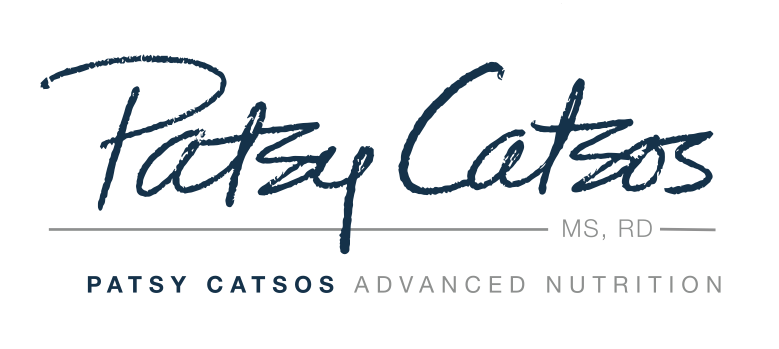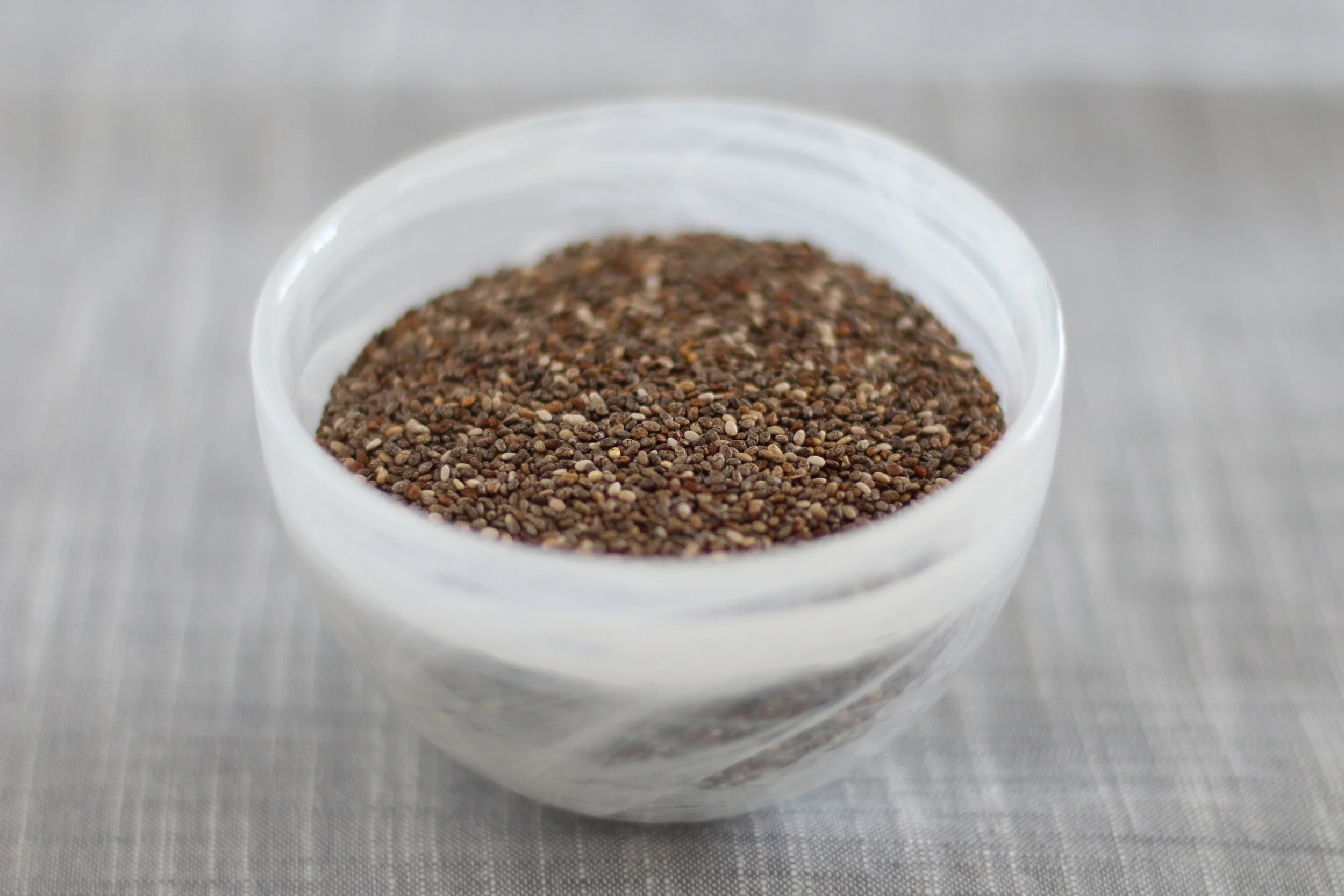Today’s guest post is by dietetic intern Sarah Skovran. Sarah, who lives on the coast of Maine with her husband and son, is a mid-life career changer, who previously worked as an elementary school teacher, and then as a certified personal trainer. Her interest in nutrition began as a personal trainer and developed as the mother of a child with food allergies; she wanted to help other parents in the same situation. She returned to school, earned another degree (in nutrition, this time) at University of Maine, and is now finishing up the supervised practice stage of her training, the last step before taking the registration exam to become a registered dietitian nutritionist (RDN).
Egg Substitutes in Baking
By Sarah Skovran
Eggs perform many functions in baking. They alter the texture and structure of the finished product in several ways. Eggs add moisture, act as binders, and emulsify (allow the fatty and watery parts to combine). They also contribute to leavening by forming a foam that can hold expanding air bubbles. Eggs will also affect the color and flavor of the item. Eggs are low in FODMAPs so there's no need to avoid them for the sake of the elimination diet, but what if you’re allergic, or you’re following a vegan diet, or you ran out of eggs? How do you find a substitute that can do everything an egg can do? And is it even possible while maintaining your low-FODMAP lifestyle?
You might not be able to find a substitute that can do everything an egg can do. But if you know the egg’s function in a particular recipe, chances are good that there is another product that will work.
There are of course exceptions. Recipes with more than two eggs are often not good candidates for egg replacement. Similarly, if the egg is primarily responsible for the structure of the recipe (as in a flourless cake or a custard), it might not be worth trying without eggs unless you’re willing to risk some failures. Finally, recipes that call for eggs to be separated into yolks and whites will not work with most egg replacers.
Here is a list of egg replacers I’ve tried and like, and that are also appropriate for a low-FODMAP diet. Typically, the volume of an egg is 3-4 tablespoons, so most replacements for one egg will be approximately the same.
Chia seeds
I’m starting with my favorite. Chia seeds were once only found in health food stores or in Chia pet kits, but now they are becoming more and more readily available in supermarkets. Simply mix 1 tablespoon of chia seeds with 3 tablespoons of cold water to make the equivalent of one egg. Allow the mixture to stand for five to ten minutes and it will gel right up. (The gelling action works even better if you take a couple of minutes to grind the chia seeds with a mortar and pestle, but you don’t have to - I never do.) Then you can add the chia egg to the recipe just as you would a regular egg.
Chia eggs make great egg replacers in cakes, cookies, muffins, pancakes, waffles, and quick breads, partly because these items usually have other sources of leavening in addition to eggs. Chia seeds can also be a good option if you are doing gluten-free baking, as the binding action of the gel can provide some of the structure that would otherwise be contributed by gluten. Yet another benefit of using chia seeds is that they provide protein, fiber, and omega-3 fatty acids.
The seeds are visible in the final product, so if this will bother you, choose white or black chia seeds based on the color of whatever it is that you’re making. If you use the whole seeds, without grinding, the texture might be noticeable in the final product as well.
Flax Seeds or Linseed Meal
Flax eggs might be more well-known than chia eggs. The instructions for making them are essentially the same, but flax seeds must be ground first. Most sources will recommend that you buy whole flaxseeds and grind them as needed, warning that they will start to taste funny once the oils in the seeds are exposed to air and the seeds become rancid. However, I usually just buy ground flaxseed and keep it in the refrigerator, and I have not experienced this rancidity.
Note that Monash University has not tested flax seeds in their FODMAP lab. However, the FODMAP Friendly app indicates that linseeds (flax seeds) are low in FODMAPs based on testing they have commissioned. Therefore, feel free to try using flax seeds on your low-FODMAP diet, but as always, pay attention to how they affect you.
For one egg, mix 1 tablespoon of ground flax seeds with 3 tablespoons of water and let it sit for a few minutes. This mixture won’t get quite as gelatinous as a chia egg, but it will thicken. Then it can be added to recipes in place of an egg. Also like chia eggs, flax eggs are best used in cakes, cookies, muffins, pancakes, waffles, and quick breads. And also like chia seeds, flax seeds provide protein, fiber, and omega-3 fatty acids.
** Special note regarding chia and flax seeds: if the recipe already calls for one of these, I will typically use the other to make the egg replacer. For example, if the recipe already contains chia seeds, I will use flax for the egg replacer even though I generally prefer chia eggs. **
Mashed Banana
One half of a medium ripe banana, mashed well with a fork or food processor, makes about 1/4 cup, or enough to replace one egg. Because of their moisture level and texture, mashed bananas are best used in baked goods that are a little chewy, like soft cookies. You also must be careful of flavors here: bananas have a distinct taste. Make sure you won’t mind tasting a little banana in the final product, or only use this option when the flavors involved are strong enough to cover the banana flavor.
Silken Tofu
Silken tofu is a low-FODMAP no-no, so why am I including it here? If you are looking for egg replacers because you are a vegan, it might behoove you to choose something protein-rich, even if it’s higher in FODMAPs, and decrease your FODMAP consumption elsewhere. This is a FODMAP “budgeting” decision you can discuss with your nutrition practitioner after you learn about how you respond to oligosaccharides through the reintroduction process.
To use silken tofu as an egg replacer, it must have a uniform texture. You can put it in a blender or a food processor, or whisk it really vigorously by hand. Use 1/4 cup for each egg you’re replacing. Silken tofu works best in cakes and quick breads; I have personally found it makes pancakes too dense.
Baking Powder
Baking powder alone is not an effective egg replacer, however it is a good leavening agent to add to other options. Let’s say you want to replace the eggs in a cake, and don’t see another source of leavening (baking soda, baking powder) in the recipe. Or maybe you tried a recipe with an egg replacer, and it was a little denser than you’d like. In each of these cases, you could try adding 1/2 teaspoon of baking powder to the egg replacer for each egg you’re replacing. This will lighten the texture and help the product to rise. (Note: this did not solve my silken tofu pancake problem.)
Commercial Egg Replacers
These get a mention because you’ve probably heard of or even tried some commercially available egg replacers. If you’d like to go this route, please read ingredients very carefully. Several have ingredients which are untested and might be unsuitable for low-FODMAP diets. At least one of the commercial egg replacers contains soy flour, which is not a low-FODMAP soy product.
Remember that many egg alternatives will add FODMAPs to the recipe total, so keep your eyes on the portions.
This page may contain affiliate links. We are a participant in the Amazon Services LLC Associates Program, an affiliate advertising program designed to provide a means for us to earn fees by linking to Amazon.com and affiliated sites.

